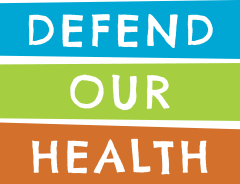Back to School: Lead in drinking water
August 17, 2021 | Legislative Campaigns, Safe Water | Tags: Children, Drinking Water, Lead, School
Water fountains are a common fixture of public schools in the US, providing water access to the over 50 million kids attending public schools across the country. In fact, schools that offer federal free lunch programs are required to ensure that students have access to drinking water at school.
In theory, this should be great for everyone: public schools should have safe water because they’re supplied by community water systems, and parents should be able to send their kids to school with confidence that they’ll have access to safe water fountains to stay hydrated. Unfortunately, that’s not always the case.
First, historically water quality testing has been required before water leaves the water utility, but not at individual schools. That means that a school supplied by a public water utility might still have contaminants that make their way into water before it reaches the fountain. In particular, students could be exposed to unsafe levels of lead if their school has older lead plumbing. And lead has long known to be a powerful neurotoxin that’s especially harmful to young children’s rapidly developing minds. The only way to be sure that kids’ fountain water is safe is to test the water at the fountain.
Second, the Federal standard for lead is currently at 15 parts per billion (ppb), a number that’s been long known to be grossly insufficient for protecting health, especially for children. In fact, the allowable limit for lead *should* be zero, or as close to it as possible.
A number of states, including Maine, have taken matter into their own hands to tackle these related problems. Earlier this year, Defend Our Health sponsored a bill championed by Health and Human Services committee co-chair Rep. Michele Meyer, that ensured that schools would have their water tested in ways that reflected how kids use it (that is, coming out of fountains and faucets). Any water source that tests above 4 ppb will trigger an action: in many cases, the solution is as simple as disconnecting the source, and informing parents and staff about the change.
Here’s what you can do to fight for clean drinking water in your community’s schools:
- Ask your school if they perform regular water testing. If you’re in Maine, you can find out about Maine’s school lead testing requirements here.
- Join our mailing list for updates, or donate today to support safer water for everyone.
